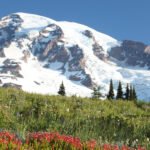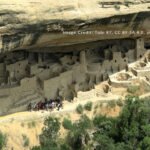5 Must Do Adventure Activities in Yosemite National Park
“Discover Yosemite National Park: Where cliffs soar, waterfalls thunder, and adventure awaits. Join us as we delve into the heart of this natural wonderland, where every step sparks adrenaline and marvel.”
Table of Contents
1. Rock Climbing
Rock climbing in Yosemite National Park is a thrilling and iconic experience, drawing climbers from all over the world. Here’s a detailed rundown:
Climbing Areas
El Capitan: One of the most famous granite monoliths globally, offering routes of varying difficulty, including the legendary “Nose” and “Dawn Wall.”
Half Dome: Recognizable for its distinct shape, it features routes like the “Regular Northwest Face” and the “Snake Dike.”
Cathedral Rocks: Provides multi-pitch climbs and cracks of varying grades.
Tuolumne Meadows: Offers high-country climbing with domes, cracks, and face climbing.
Types of Climbing
Traditional Climbing (Trad): Utilizes removable gear for protection as climbers ascend.
Sport Climbing: Involves permanently fixed anchors for protection.
Bouldering: Climbing shorter, challenging routes without ropes, often close to the ground.
Difficulty Grading
Yosemite Decimal System (YDS): Ranges from 5.0 (easiest) to 5.15 (extremely difficult).
Aid Climbing: Designated by A0 (easiest) to A5 (hardest), indicating the amount of aid required.
Planning and Permits
Permits: Required for overnight stays in the backcountry or for specific climbs, obtainable through the National Park Service.
Reservations: Recommended for popular climbs, especially on El Capitan.
Safety and Precautions
Experience: Yosemite’s climbs vary in difficulty, requiring different skill levels. Ensure you’re adequately prepared.
Gear: Climbing shoes, ropes, harnesses, helmets, and protection devices are essential.
Weather Conditions: Can change rapidly; be prepared for sudden changes.
Wildlife Awareness: Yosemite is home to bears and other wildlife; practice proper food storage.
Guide Services
Guided Tours: Available for climbers of all levels, providing instruction and equipment.
Climbing Schools: Offer multi-day courses covering various skills and safety measures.
Environmental Considerations
Leave No Trace: Follow the park’s guidelines for minimal impact on the environment.
Access Restrictions: Certain areas may have seasonal closures for bird nesting or other conservation reasons.
Best Time to Climb
Spring and Fall: Mild temperatures and fewer crowds, making climbing conditions favorable.
Summer: Hotter weather but longer days for climbing.
Notable Climbing Events
Yosemite Facelift: Annual event focused on cleaning up trash and maintaining climbing routes.
Yosemite Valley Climbing Festival: Celebrates climbing culture with workshops, presentations, and community gatherings.
Yosemite National Park offers a mecca for rock climbers, boasting some of the most challenging and rewarding climbs in the world. However, it’s essential to prepare adequately, respect the environment, and ensure safety measures are in place before embarking on any climbing adventure in this iconic park.
2. Hiking
Hiking in Yosemite National Park is an incredible experience, offering a vast array of trails suitable for various skill levels, from beginner to advanced. Here’s a detailed overview:
Trails and Difficulty Levels
Yosemite Valley Trails: Ideal for beginners and families. Trails like Lower Yosemite Falls, Mirror Lake, and Bridalveil Fall offer easy, scenic walks.
Mist Trail: Moderate difficulty, leading to Vernal Fall and Nevada Fall. It can be strenuous due to steep sections and mist from the falls.
Half Dome: Advanced hike, requiring a permit. It’s a challenging, 14- to 16-mile round trip with cables near the summit. Prepare for a full day’s adventure.
Glacier Point: Offers spectacular views of Yosemite Valley. You can hike up (4-mile trail) or take a shuttle/bus to enjoy the panorama.
Tuolumne Meadows: This high-country area has various trails of different lengths and difficulties, offering stunning alpine scenery.
Tips for Hiking in Yosemite
Permits: Some trails, like Half Dome, require permits. Plan in advance and check the National Park Service website for details.
Weather Preparedness: Conditions can change rapidly. Bring layers, even in summer, as temperatures vary. Check weather forecasts and park alerts.
Water and Supplies: Carry plenty of water, snacks, a map, sunscreen, and a first-aid kit. Some longer hikes might require more extensive supplies.
Trail Etiquette: Respect wildlife, stay on designated trails, and follow Leave No Trace principles to preserve the park’s beauty.
Trailhead Parking: Arrive early, especially during peak seasons, as parking spots fill quickly at popular trailheads.
Altitude Consideration: Yosemite spans various elevations. Take it easy if you’re not acclimated to higher altitudes.
Wildlife Awareness: Be cautious around wildlife; maintain a safe distance and never feed them.
Best Times to Hike
Spring: Waterfalls are at their peak, and meadows bloom with wildflowers.
Summer: The high country trails are accessible, but it’s also the busiest time. Expect crowds and limited lodging availability.
Fall: As crowds thin, temperatures cool, and fall colors appear, it’s a beautiful time for hiking.
Winter: Some trails close due to snow, but snowshoeing and cross-country skiing become popular activities.
Essential Resources
Yosemite National Park Website: Provides up-to-date trail information, alerts, and permits.
Visitor Centers: Stop by for maps, trail advice, and current conditions.
Guidebooks and Maps: Offer detailed trail descriptions and topographic maps for planning your hikes.
Hiking in Yosemite is an exceptional way to experience the park’s breathtaking landscapes, from towering waterfalls to granite cliffs. Remember to plan ahead, stay safe, and immerse yourself in the beauty of this natural wonderland!
3. River Rafting
River rafting in Yosemite National Park offers thrilling experiences amidst stunning natural beauty. The primary river for rafting in the park is the Merced River, particularly in the section that flows through the Yosemite Valley. Here’s some detailed information:
Rafting Season
Typically runs from late spring to early summer, primarily May to July.
Depends on snowmelt and water flow; the season might vary yearly.
High water levels may restrict rafting due to safety concerns.
Rafting Options (Merced River Rafting)
Difficulty: Varies from calm stretches to Class III rapids.
Scenery: Gorgeous views of Yosemite Valley’s granite cliffs, lush forests, and wildlife.
Routes: Usually start at Curry Village or Stoneman Bridge and end at Sentinel Beach Picnic Area or Housekeeping Camp.
Things to Consider
Guided Tours vs. Self-Guided: Both options are available. Guided tours provide expertise and equipment but can be pricier.
Safety Measures: Always wear life jackets and helmets, especially during high water levels or rapid sections.
Experience Level: Some sections might be more suitable for beginners, while others may require prior rafting experience.
Preparations
Reservations: Recommended, especially for guided tours.
Equipment: Rafts, paddles, life jackets, and helmets are often provided by tour companies.
Tour Companies
Several outfitters operate within or near Yosemite National Park offering guided rafting tours.
Some popular ones include Zephyr Whitewater Expeditions, Sierra Mac River Trips, and Yosemite Outfitters.
Additional Tips
Weather Check: Monitor weather forecasts and river conditions before planning.
Physical Fitness: Rafting might require moderate physical effort, especially during paddling.
Safety Considerations
Water Conditions: Can vary due to changing weather and snowmelt; always prioritize safety.
Follow Instructions: Whether self-guided or with a guide, follow instructions diligently.
Rafting in Yosemite offers an incredible opportunity to experience the park from a unique perspective, combining adventure with the park’s natural beauty. It’s essential to plan ahead, consider safety measures, and choose the right experience based on your skill level and preferences. Always prioritize safety and enjoy the breathtaking scenery along the Merced River!
4. Backcountry Backpacking
Backcountry backpacking in Yosemite National Park is an incredible way to experience the park’s natural beauty, away from the crowds and closer to its wilderness. Here’s a detailed overview:
Permits and Regulations
Permits: Overnight stays in the backcountry require a wilderness permit. These permits are limited and often in high demand, especially during peak seasons. Reservations are recommended and can be made in advance through the park’s website or in-person at designated permit stations.
Regulations: Yosemite has specific regulations regarding camping, food storage, and waste disposal to protect the park’s ecosystems. Complying with these rules is essential to preserve the environment and ensure everyone’s safety.
Planning
Route Selection: Yosemite offers a range of trails catering to different skill levels and interests. Trails like the John Muir Trail, the Pacific Crest Trail, or the High Sierra Camps Loop offer varied experiences.
Fitness and Skill Level: Assess your fitness level and backpacking experience when choosing a route. Yosemite’s terrain can be challenging, with high elevations and steep trails.
Gear: Adequate gear, including a reliable backpack, tent, sleeping bag, food, water filter, stove, and appropriate clothing for varying weather conditions, is crucial. Packing lightweight and compact items is advisable due to the need to carry everything on your back.
Food and Water: Plan your meals and carry lightweight, high-energy food. Ensure you have a water purification system as potable water sources might be limited or require treatment.
Wilderness Experience
Scenery: Yosemite’s backcountry offers breathtaking vistas, serene lakes, lush forests, and stunning granite cliffs. Don’t miss iconic spots like Half Dome, Yosemite Valley, Tuolumne Meadows, and the Mist Trail.
Wildlife: Be prepared to encounter wildlife such as bears, deer, coyotes, and various bird species. Proper food storage is essential to prevent wildlife encounters.
Weather: Yosemite’s weather can be unpredictable. Be prepared for sudden temperature changes, rain, and even snow, especially at higher elevations.
Safety and Leave No Trace Principles
Safety: Stay informed about weather conditions, carry a map and compass, and let someone know your itinerary. Be cautious around water bodies and steep cliffs.
Leave No Trace: Adhere to the principles of Leave No Trace by minimizing impact on the environment. This includes proper waste disposal, respecting wildlife, and leaving natural objects undisturbed.
Backcountry backpacking in Yosemite offers an unparalleled opportunity to immerse yourself in the park’s untamed beauty. However, it requires careful planning, adherence to regulations, and a respect for nature. Prepare adequately, follow guidelines, and cherish the unique experience of exploring Yosemite’s wilderness. Before embarking on your journey, it’s always a good idea to check the latest information and updates from the Yosemite National Park website or visitor center, especially for any trail closures, alerts, or changes in regulations.
5. Snow Adventures
Yosemite National Park in winter transforms into a breathtaking wonderland offering unique opportunities for snow-covered adventures. Here’s a detailed overview:
Activities
Snowshoeing and Cross-Country Skiing
Glacier Point Road: Closed for vehicles in winter, it becomes a snow-covered trail ideal for cross-country skiing and snowshoeing.
Badger Pass Ski Area: Offers groomed trails for cross-country skiing and snowshoeing, suitable for all skill levels.
Downhill Skiing and Snowboarding
Badger Pass Ski Area: The park’s only downhill skiing area, featuring various slopes for skiing and snowboarding.
Ice Skating
Curry Village Ice Rink: Open during winter months, providing a unique skating experience with the backdrop of Half Dome.
Winter Photography
The park’s iconic landscapes covered in snow offer stunning photo opportunities.
Guided Tours and Ranger Programs
Snowshoe Walks: Ranger-led tours providing insights into the park’s winter ecology and history.
Photography Walks: Guided tours focused on capturing the park’s winter beauty.
Logistics
Accommodation: Lodging options like The Ahwahnee, Yosemite Valley Lodge, and Curry Village remain open in winter, but availability might be limited. Alternatively, consider nearby accommodations in towns like Mariposa or El Portal.
Weather and Road Conditions: Weather in winter can be unpredictable, with snowfall and occasional road closures. Check road conditions and park alerts before visiting.
Equipment Rental: Badger Pass Ski Area offers equipment rentals for skiing, snowboarding, and snowshoeing.
Park Accessibility: Some areas and trails might be inaccessible or challenging to navigate due to snow. Check with park rangers for updated information.
Timing: Winter visitation typically spans from November to March, but specific activities and accessibility may vary based on snowfall and conditions.
Tips
Dress in Layers: Winter temperatures in Yosemite can vary greatly, so dressing in layers is essential.
Plan Ahead: Make reservations for accommodations and activities in advance, especially during peak winter months.
Safety First: Be prepared for changing weather conditions, carry essentials like water, snacks, and a first aid kit.
Scenic Highlights
Glistening Landscapes: Iconic landmarks like Half Dome, El Capitan, and Yosemite Falls covered in snow offer mesmerizing views.
Frozen Waterfalls: Bridalveil Fall and other waterfalls sometimes freeze partially or completely, creating stunning icy formations.
Quiet Serenity: Experience the park in a more peaceful ambiance with fewer crowds compared to peak tourist seasons.
Visiting Yosemite National Park during the snowy months offers a serene and enchanting experience, providing a unique perspective on its natural beauty. Always prioritize safety and preparedness while enjoying the snow-covered adventures!
Click here for more information on Yosemite National Park.
In the heart of Yosemite National Park, adventure transcends mere activities; it’s an embrace of nature’s grandeur and a testament to the human spirit’s quest for exploration. Whether you’re scaling sheer cliffs, hiking to cascading waterfalls, navigating whitewater rapids, wandering through snow-kissed landscapes, or immersing yourself in the backcountry, Yosemite offers a canvas for unforgettable adventures. Let the memories of conquering giants, embracing serenity, and connecting with raw wilderness linger long after you’ve left, inspiring future journeys and a deeper appreciation for the remarkable treasures our planet holds. Come, embark on an odyssey in Yosemite, where every step is a testament to the thrill of the unknown and the beauty of the natural world.








2 thoughts on “5 Must Do Adventure Activities in Yosemite National Park”